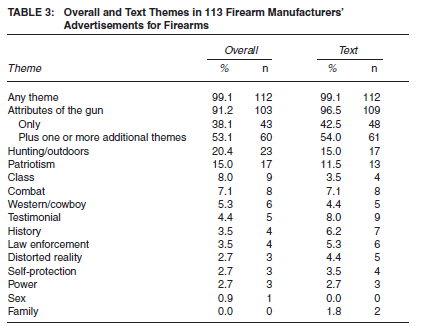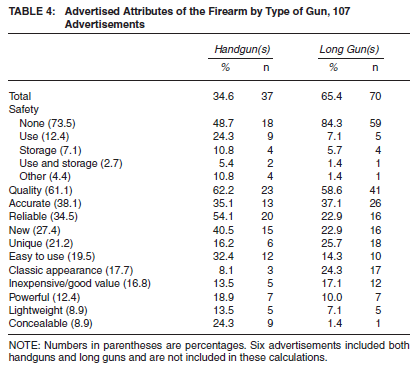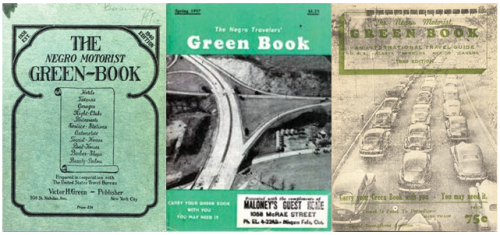We’re celebrating the end of the year with our most popular posts from 2013, plus a few of our favorites tossed in. Enjoy!
Studying up on the literature on gun marketing for a recent interview with the New York Times, I found a 2004 article on the topic with some really interesting findings.
The study — by public health scholar Elizabeth Saylor and two colleagues — asked what tactics marketers use to sell guns in a single month of advertising. In contrast to what you might imagine, only a small minority of gun ads emphasized self-protection (3%) or a Western cowboy lifestyle (5%). Zero percent mentioned protecting one’s family. Only 15% of gun ads linked ownership to patriotism. The most common substantive theme was hunting, but even that was a theme in only 20% of ads.
So what are gun advertisers highlighting in their ads? Technical attributes. The majority of gun ads (91%) emphasize the things that make one gun different from the next. For example, they discuss the quality of the gun (61%), its accuracy (38%) and reliability (35%), and its innovative features (27%) and uniqueness (21%).
Why are gun manufacturers using this marketing strategy?
Here’s where the statistics get really interesting. At the time of the study, 44 million Americans owned firearms. Three-quarters of these owned more than one gun. In fact, 20% of gun owners are in possession of 55% of all guns (excluding law enforcement and military).
In other words, guns are not evenly distributed across the U.S. population, they are concentrated in the hands of a minority. Most people that don’t own a gun are never going to buy one, so the best strategy for gun manufacturers is to convince people that they need lots of guns. Differentiating the technical attributes of one from another is their way of telling the buyer that any given gun will do something different for them than the guns they already have, enticing the gun owner to own a range of guns instead of just one.
Cross-posted at iVoter.
Lisa Wade, PhD is an Associate Professor at Tulane University. She is the author of American Hookup, a book about college sexual culture; a textbook about gender; and a forthcoming introductory text: Terrible Magnificent Sociology. You can follow her on Twitter and Instagram.














